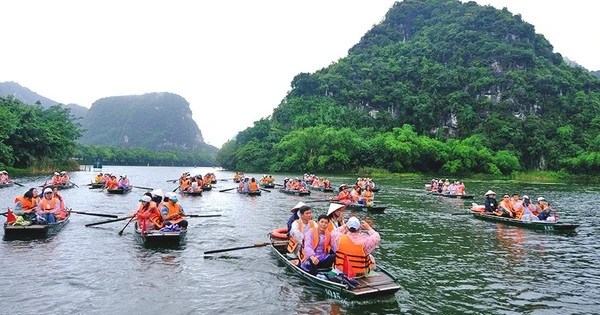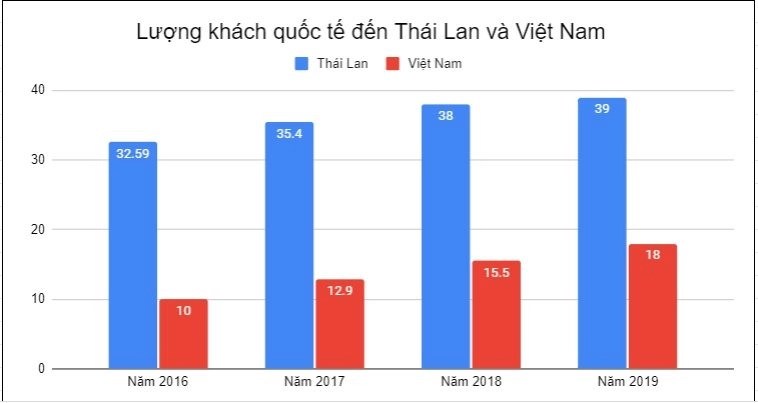Suy nghĩ lại về chuyến du lịch
Đại dịch Covid-19 khiến ngành du lịch chìm trong u ám khi thị trường nội địa đóng băng vì các biện pháp xa cách xã hội, và thị trường khách du lịch quốc tế bị đóng cửa. Gần 95% cơ sở kinh doanh du lịch phải ngừng hoạt động. Ở nhiều địa phương, du lịch không còn là động lực chính thúc đẩy nền kinh tế.
Sau khi Việt Nam chính thức mở cửa hoạt động du lịch vào ngày 15 tháng 3 năm 2022, một lượng lớn khách du lịch đã nhanh chóng đổ về các điểm du lịch sau một thời gian dài nhu cầu bị kìm hãm. Tuy nhiên, một trong những mục tiêu của Việt Nam trong năm nay là đón 5 triệu lượt khách quốc tế dường như không còn khả thi. Theo Tổng cục Du lịch, tính đến ngày 29/9, Việt Nam mới đón 1,6 triệu lượt khách quốc tế.
Bên cạnh những nguyên nhân khách quan, khó có thể phủ nhận du lịch Việt Nam còn nhiều vấn đề muôn thuở, ảnh hưởng đến lượng khách cả trong và ngoài nước, cũng như khả năng phát triển bền vững trong tương lai.
“Tại sao khách quốc tế đến Việt Nam chỉ bằng 1/3 Thái Lan? Tại sao du khách đến Việt Nam chi tiêu ít hơn nhiều? Tại sao họ lại truyền nhau rằng đi Việt Nam đẹp, rẻ nhưng không chuyên nghiệp và dịch vụ kém? ”, Bà Trần Nguyên, Giám đốc kinh doanh của Sun World Group, một thương hiệu giải trí của Tập đoàn Sun Group đặt ra hàng loạt vấn đề trong buổi tọa đàm. “Phục hồi và Phát triển Du lịch Việt Nam sau Đại dịch Covid-19” tuần trước.
So sánh lượng khách quốc tế đến Việt Nam và Thái Lan qua các năm. Ảnh: danviet.com
“There were times when we welcomed a lot of zero-dong guests. Do they bring anything, or just help increase the number of visitors?”, she said.
As a member of the Vietnam Tourism Advisory Council, Nguyen believes that the first thing to do is rethink tourism. According to her, Covid-19 creates a silence to rethink tourism, towards sustainable tourism development instead of quantity.
“Not sure if the customer has agreed to buy”
The large number of guests also has a downside. Service people will find it difficult to take care of all customers. Besides, revenue is not necessarily better.
On this basis, Ms. Nguyen suggested that Vietnam’s tourism should focus on the factor of “intensive farming”, that is, increasing the frequency of visitors’ return thanks to quality products and services, thereby increasing sales collect. Parties can cooperate to create new product combos at the same price, but help customers have more choices and better experiences.

Khu du lịch Tràng An Ninh Bình. Ảnh: TITC.
“Let’s drop the concept of stimulating demand by reducing prices. This is a very wrong view. Destinations that can’t locate this will turn themselves into a discount brand and very soon go down” emphasized Sun World’s head of sales.
To convince customers to return again and again without discounting, products and services must be taken care of. “Not sure if it’s cheap that they agreed to buy. The Tourism Advisory Council conducted an online survey and found that the percentage of customers who wanted cheap prices was significantly less than the desire to improve the quality of products and services. In other words, good value for money. They want quality that corresponds to the amount of money spent” Nguyen said.
Mediterranean town – a project invested and built by Sun Group in South Phu Quoc. Photo: Sun Group.
However, it is necessary to consider the broader issue that tourism has many different forms and purposes. Sightseeing and relaxing tourism is different from experience and discovery tourism.
“With the post-pandemic context that the domestic and foreign economies are still facing many difficulties and the people’s finances are no longer abundant, I think price reduction is a good solution that companies can use to stimulate demand, increasing revenue and market share, helping businesses gradually overcome this difficult period” he shared.
Mr. Phong further noted that promotions are just one of many options for businesses to apply. Depending on specific conditions and models, each company has different plans and ways of applying it.
Improve the way tourism products and services are made
Deputy director of VNPAY business unit Tran Dinh Thanh said many tourists still complain about services in Vietnam. According to VNPAY’s data analysis, the first situation that annoys tourists in general is wooing without understanding their needs. Next is the price is not uniform, the customers are slashed, the attitude of the waiter is not professional.
Looking at his friend Thailand, Mr. Thanh said that Vietnam is still quite inferior in that it has not yet built a community together up-sale or cross-sale. “In Thailand, when a customer comes to a place to eat, the store will immediately have discount vouchers for a shopping mall. The shopping mall has a voucher for the nightlife area, thereby encouraging customers to spend more money” he said.
In order to improve the situation, Mr. Phong proposed to maintain and promote exchange, sharing and training activities on tourism products and tourism practices between localities and management agencies, with the support of tourism agencies. foreign non-governmental organizations (NGOs).
Based on Sun World’s experience, Ms. Nguyen also suggested three directions for developing tourism products. First of all, new investment, reinvestment in symbolic works; followed by an increase in the ecosystem experience; finally solve the seasonality of tourism in Vietnam.
For example, Ha Long is a famous place, but when there are no international visitors, the seasonality is very obvious, greatly affecting revenue, operation and maintenance of personnel. Premier Village Ha Long Bay Resort is one of the destinations that has made seasonal product packages such as Lazy Sunset Bar, where customers come to listen to music and chill at a reasonable cost, sitting on the pool area. Swimming which normally cold season can be closed.
In terms of services, Ms. Nguyen called on people working in the tourism industry to serve customers with all their heart. “That’s what customers will bring back. Products can impress with unique works, but what touches customers’ hearts and creates emotions is service, even if it’s very small” she said.
Experts in the tourism industry also noted the great potential of the domestic market. This is the lever to help Vietnam’s tourism industry recover after Covid-19, when the international market did not meet expectations. In the first 9 months of this year, the domestic market reached nearly 87 million visitors, while in the same period in 2019 there were only 66 million arrivals. This number is expected to reach 100 million by the end of the year.
Nguyen pointed out that two domestic routes have grown significantly compared to the same period in 2019: Da Lat with 163% and Phu Quoc with 198%. Meanwhile, Phu Quoc is said to be the most expensive tourist destination, about 20-25% more expensive than other famous places such as Nha Trang, Da Lat, and Da Nang, including airfares, hotels or more tours, routes.
“Từ bài học của Sun Group, chúng tôi nhận thấy khách du lịch nội địa là vô cùng tiềm năng và cần được chú trọng một cách nghiêm túc bằng việc khai thác và cung cấp các dịch vụ tốt hơn. Họ hoàn toàn có thể mua được và muốn được trả tiền ”, cô nói.
Nguồn: CafeF


